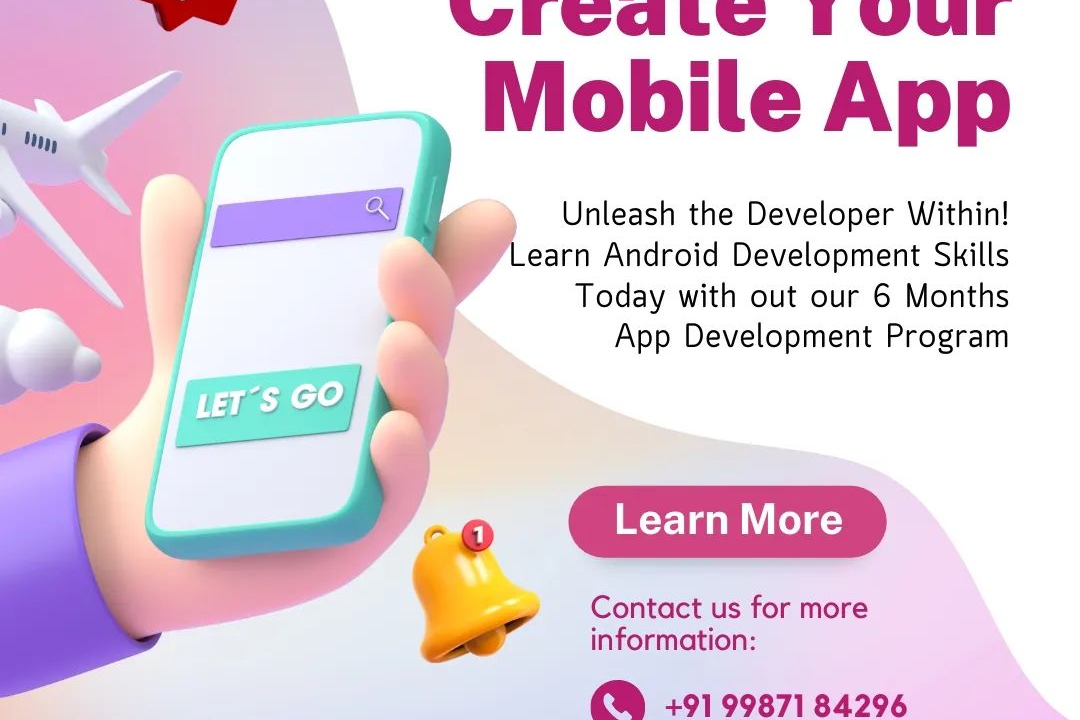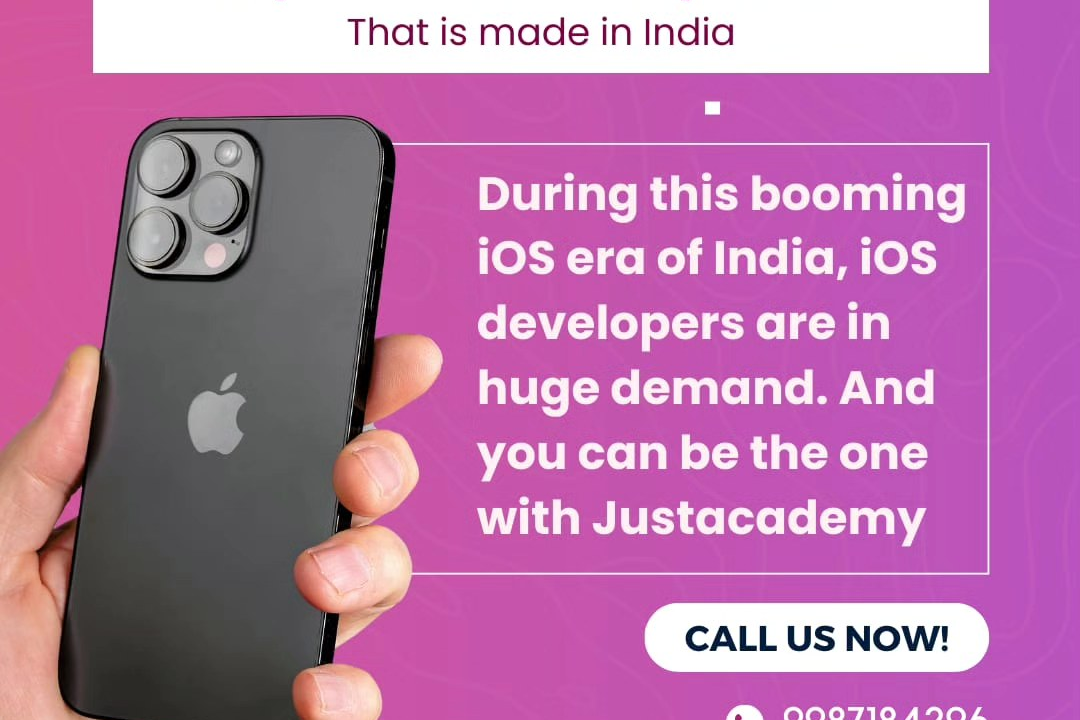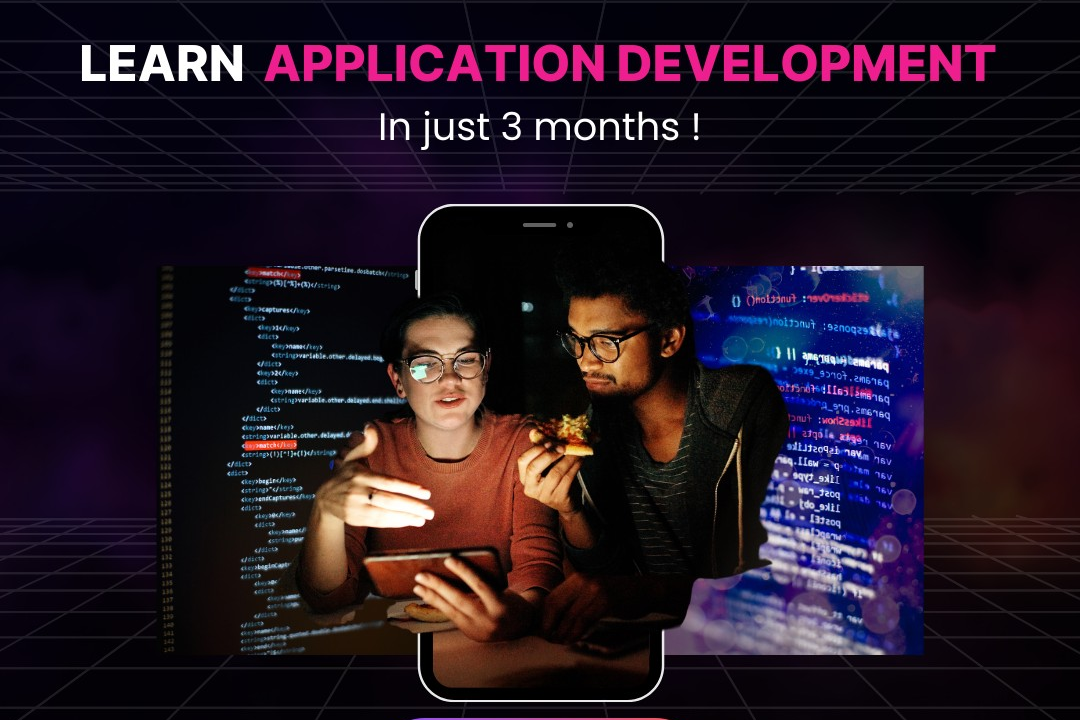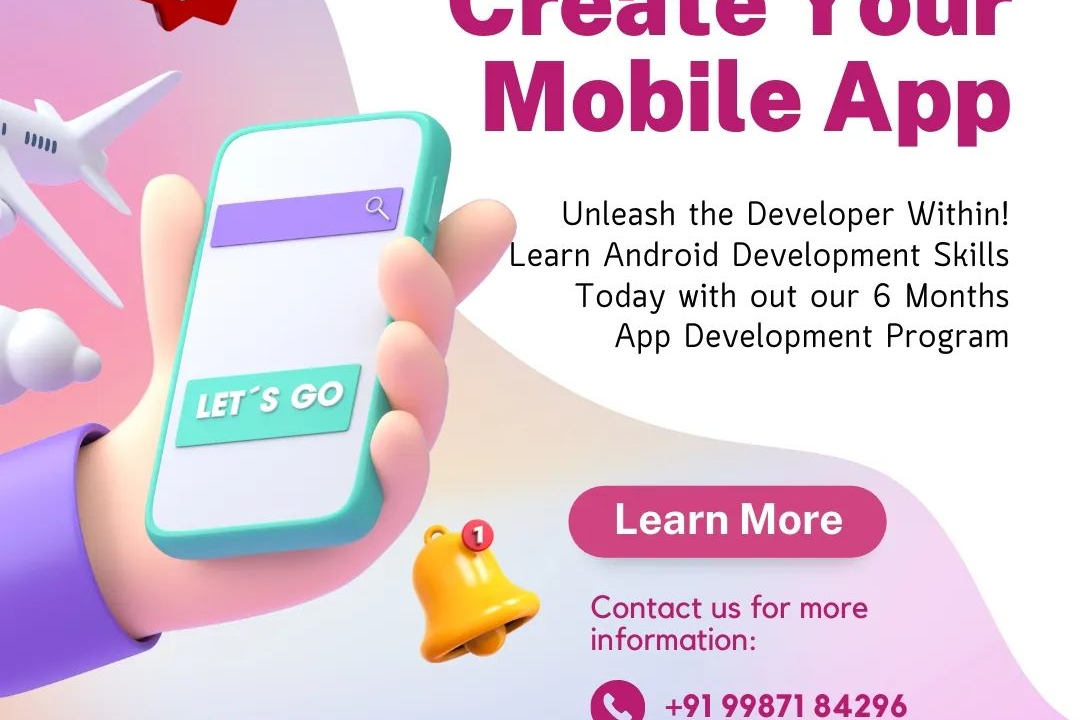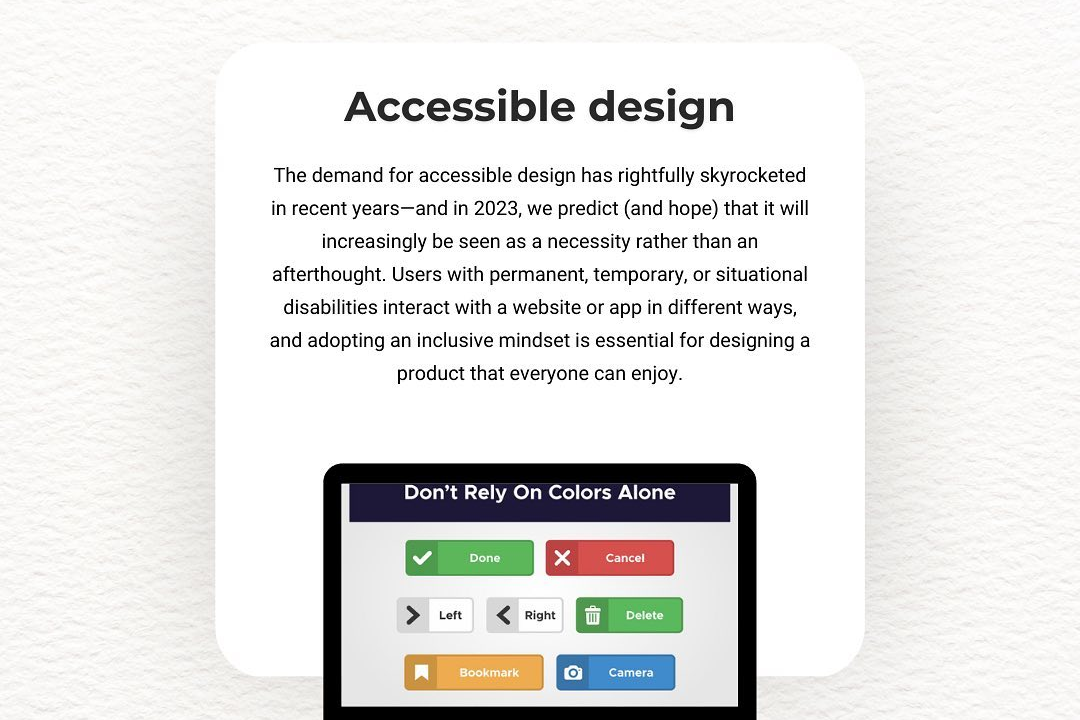App Deployment to Play Store
Mastering App Deployment: A Step-by-Step Guide to Publishing on the Play Store
App Deployment to Play Store
App deployment to the Play Store is a crucial step in bringing your mobile application to a global audience. By publishing your app on the Play Store, you gain access to millions of Android users, enhancing your app’s visibility and potential for downloads. This platform not only provides a reliable distribution channel but also offers tools for app updates, user feedback, and analytics, allowing developers to optimize their app based on real user experiences. Additionally, the credibility associated with being listed on the Play Store can instill trust among users, which is essential for building a loyal customer base and ensuring the long-term success of your application.
To Download Our Brochure: https://www.justacademy.co/download-brochure-for-free
Message us for more information: +91 9987184296
1 - Create a Developer Account: To deploy an app on the Play Store, start by registering for a Google Play Developer account, which requires a one time fee.
2) Prepare Your App: Ensure your application is optimized and free of bugs. Conduct thorough testing to provide a seamless user experience.
3) Set Application ID: Choose a unique application ID that adheres to the naming conventions and is not already in use.
4) Create a Signed APK: Build a signed APK or app bundle, as the Play Store requires a digitally signed version of your app for distribution.
5) Prepare App Listing: Draft a compelling app description, select relevant keywords, and choose appropriate categories to improve discoverability.
6) Design App Graphics: Create eye catching visuals, including app icons, feature graphics, and screenshots, to attract potential users.
7) Compliance with Guidelines: Familiarize yourself with Google Play’s policies and guidelines to ensure your app meets all requirements.
8) Upload to Play Console: Access the Google Play Console to upload your APK or app bundle, along with the prepared app listing and graphics.
9) Set Pricing and Distribution: Decide whether your app will be free or paid, set the pricing, and select the territories for distribution.
10) Testing Tracks: Consider utilizing closed or open testing tracks before a full rollout to gather user feedback and make necessary adjustments.
11 - Submit for Review: Once all information and files are uploaded, submit your app for review, which usually takes a few days.
12) Monitor Review Status: Keep an eye on the status of your app review in the Google Play Console for any feedback or required changes.
13) Address Issues: If your app is rejected, address any issues highlighted in the review and resubmit it promptly.
14) Launch Your App: After approval, launch your app on the Play Store and start promoting it across various channels to reach your audience.
15) Gather User Feedback: Post launch, actively monitor user reviews and analytics to gain insights, which will help in future updates and improvements.
16) Regular Updates: Plan regular updates to enhance functionality and address user feedback, ensuring your app remains relevant and user friendly.
17) Create a Privacy Policy: Draft a clear privacy policy that complies with regulations and informs users how their data will be used and protected.
18) Optimize for SEO: Use relevant keywords in your app title and description to improve its visibility in app store searches.
19) Incorporate User Onboarding: Design a user friendly onboarding process to guide new users through your app’s features and functionalities.
20) Implement Analytics: Integrate analytics tools like Google Analytics or Firebase to track user engagement, retention, and behavior patterns.
21 - Include Social Sharing Options: Allow users to easily share content from your app on social media platforms to enhance visibility and user acquisition.
22) Leverage Beta Testing: Utilize beta testing groups to obtain valuable feedback on user experience and functionality before the official launch.
23) Promote Cross Platform Compatibility: Highlight if your app is available on multiple platforms (like iOS) to attract a wider audience.
24) Prepare FAQs and Support Resources: Create a comprehensive FAQ section and support materials to assist users and address common queries.
25) Explore Marketing Strategies: Develop a marketing plan that includes various strategies such as social media advertising, influencer partnerships, and content marketing.
26) Utilize App Store Optimization (ASO): Continuously optimize your app’s title, keywords, and description based on user trends and search behaviors.
27) Engage with Your Community: Build a community around your app through social media or forums, encouraging users to share their experiences and provide feedback.
28) Incorporate Push Notifications: Use push notifications wisely to engage users, inform them of updates, and encourage re engagement without being intrusive.
29) Maintain a Feedback Loop: Actively seek user feedback after launch and make it easy for users to report bugs or suggest improvements.
30) Monitor Your Competition: Keep an eye on competitor apps to understand market trends, user preferences, and identify opportunities for differentiation.
31 - Plan for Monetization: Consider various monetization strategies, such as in app purchases, subscriptions, or ads, based on your app’s target audience and purpose.
32) Stay Updated on Trends: Regularly research current market trends and technological advancements to ensure your app remains relevant.
33) Participate in Developer Forums: Engage with developer communities to share knowledge, seek advice, and stay connected with industry updates.
34) Create an App Website: Develop a dedicated website for your app to provide detailed information, gather user interest, and support marketing efforts.
35) Publish Regular Content: Consider releasing regular content updates or blog posts related to your app to keep users informed and engaged in your brand.
36) Utilize User Testimonials: Showcase positive user testimonials and case studies to build trust and encourage downloads.
37) Conduct A/B Testing: Implement A/B testing for different app elements, such as icons, descriptions, and layouts, to determine which versions perform better.
38) Be Prepared for Scaling: Plan for scalability in your app architecture to handle increased traffic and users in the future without performance degradation.
39) Establish a Release Schedule: Create a timeline for updates, feature releases, and marketing campaigns to maintain consistent engagement with your audience.
40) Network with Industry Leaders: Attend industry events or webinars to network with peers, gain insights, and share your app’s vision with a broader audience.
Course Overview
The “App Deployment to Play Store” course provides a comprehensive guide for developers seeking to successfully launch their applications on the Google Play Store. Participants will learn the entire deployment process, from preparing their app for release, understanding essential requirements and guidelines, to utilizing best practices for app store optimization (ASO). This course covers critical topics such as generating signed APKs, setting up the Play Console, managing listings, and implementing effective marketing strategies to enhance visibility and user engagement. Through real-time projects and hands-on exercises, learners will gain the skills and confidence needed to navigate the complexities of app deployment, ensuring their apps reach a wider audience effectively.
Course Description
The “App Deployment to Play Store” course is designed for developers who want to master the process of launching their mobile applications on the Google Play Store. Participants will explore the essential steps for preparing and optimizing their apps for successful deployment, including creating signed APKs, utilizing the Google Play Console, and adhering to Play Store guidelines. The course emphasizes practical, real-world projects that allow learners to apply their knowledge in a hands-on environment, enabling them to efficiently manage app listings, implement effective marketing strategies, and utilize best practices for maximizing visibility and user engagement. By the end of the course, students will be equipped with the skills and confidence to navigate the app deployment process and successfully reach their target audience.
Key Features
1 - Comprehensive Tool Coverage: Provides hands-on training with a range of industry-standard testing tools, including Selenium, JIRA, LoadRunner, and TestRail.
2) Practical Exercises: Features real-world exercises and case studies to apply tools in various testing scenarios.
3) Interactive Learning: Includes interactive sessions with industry experts for personalized feedback and guidance.
4) Detailed Tutorials: Offers extensive tutorials and documentation on tool functionalities and best practices.
5) Advanced Techniques: Covers both fundamental and advanced techniques for using testing tools effectively.
6) Data Visualization: Integrates tools for visualizing test metrics and results, enhancing data interpretation and decision-making.
7) Tool Integration: Teaches how to integrate testing tools into the software development lifecycle for streamlined workflows.
8) Project-Based Learning: Focuses on project-based learning to build practical skills and create a portfolio of completed tasks.
9) Career Support: Provides resources and support for applying learned skills to real-world job scenarios, including resume building and interview preparation.
10) Up-to-Date Content: Ensures that course materials reflect the latest industry standards and tool updates.
Benefits of taking our course
Functional Tools
1 - Android Studio
Android Studio is the official Integrated Development Environment (IDE) for Android app development. It provides a comprehensive set of tools for coding, debugging, and optimizing applications. Students will learn how to navigate its user interface, utilize coding features, and deploy apps directly to the Google Play Store. The IDE also comes with a powerful emulator, allowing students to test apps on various virtual devices.
2) Gradle
Gradle is a build automation tool that plays a critical role in managing project dependencies and automating the build process for Android apps. During the course, students will understand how to configure Gradle files, manage libraries, and create build variants. Mastering Gradle helps streamline the deployment pipeline, ensuring that apps are built consistently and efficiently.
3) Firebase
Firebase is a comprehensive platform for mobile and web application development that provides a variety of essential services including analytics, authentication, and real time databases. The course will cover how to integrate Firebase into Android apps for backend functionalities, which are crucial for user data and real time interactions. Understanding Firebase allows students to enhance user engagement and simplify various development tasks.
4) Google Play Console
The Google Play Console is the platform used for publishing and managing apps on the Google Play Store. Students will learn how to navigate the Play Console, optimize app listings, manage releases, and analyze user feedback and performance metrics. This hands on experience is essential for understanding the complete lifecycle of app deployment, from upload to user reviews.
5) Version Control Systems (Git)
Git is an essential tool for version control that allows developers to track changes in their codebase, collaborate with others, and manage project history effectively. In this course, students will become proficient in using Git commands to create repositories, perform merges, and resolve conflicts. This skill not only aids in project organization but also enhances collaboration within teams, providing foundational knowledge for professional software development.
6) App Bundles and APKs
Understanding the differences between App Bundles and APKs (Android Package Kits) is crucial for efficient app distribution. Students will learn to create both formats and the advantages of using App Bundles for smaller downloads and optimized user experiences. This part of the course emphasizes how to prepare apps for the Play Store, ensuring they meet the platform's standards.
7) Android Debug Bridge (ADB)
The Android Debug Bridge is a versatile command line tool that allows access to various device features and interacts with Android devices. Students will become familiar with ADB commands to debug applications, install APKs directly onto devices, and perform system level tasks. Proficiency in ADB enhances the testing phase and ensures that apps perform as expected before deployment.
8) Performance Monitoring Tools
Students will learn to use performance monitoring tools to analyze app performance, monitor crashes, and optimize user experience. These tools help identify bottlenecks and ensure the app runs smoothly on various devices. Understanding these metrics is essential for making informed decisions about updates and app improvements post deployment.
9) Design Tools (XML and Material Design)
The course will also cover design tools that focus on creating user friendly interfaces. Students will learn how to use XML for layout designs and the principles of Material Design to create aesthetically pleasing and intuitive user experiences. These design fundamentals are crucial for app success and user retention, enabling students to create visually appealing apps that adhere to industry standards.
The diverse tools covered in this training program ensure that students are well equipped to handle every aspect of app deployment to the Play Store. Each tool focuses on specific learning objectives, providing a holistic understanding of the Android ecosystem and preparing students for successful careers in app development.
Here are additional points that can enhance the Android development course content, focusing on advanced tools and essential concepts:
10) Kotlin Programming Language
Kotlin is the preferred programming language for Android development due to its modern syntax and interoperability with Java. This course will delve into Kotlin's features, such as null safety, extension functions, and coroutines for asynchronous programming. Students will gain hands on experience in writing clean and efficient code, thus simplifying the development process and increasing app reliability.
11 - Android Jetpack
Android Jetpack is a suite of libraries, tools, and architectural guidance that helps developers create robust applications. The course will cover major components such as LiveData, ViewModel, Room Database, and Navigation. Understanding Jetpack components allows students to implement best practices in app architecture, simplifying complex tasks and enhancing app performance.
12) RESTful APIs and Networking
Students will learn how to implement networking in their Android applications using RESTful APIs. The course will introduce libraries like Retrofit and OkHttp for making HTTP requests, handling JSON responses, and managing API authentication. Proficiency in networking skills is paramount as most modern applications rely on retrieving and sending data over the internet.
13) Unit Testing and UI Testing
Testing is a critical aspect of app development to ensure reliability and functionality. Students will explore various testing frameworks such as JUnit for unit testing and Espresso for UI testing. Learning to write tests not only improves code quality but also fosters best practices in software development, making the application more maintainable and robust.
14) Dependency Injection (Dagger/Hilt)
Dependency Injection (DI) helps to manage object creation and lifecycle, promoting cleaner code and easier testing. This course segment will cover how to use Dagger or Hilt to implement dependency injection in Android apps. Students will learn about the benefits of DI in maintaining code scalability and reducing boilerplate code, which is vital for larger projects.
15) User Interface (UI) and User Experience (UX) Principles
Beyond coding, students will learn about UI and UX principles to create applications that are not only functional but also easy to navigate. This section will cover important concepts such as user persona development, usability testing, and accessibility in app design. A solid grasp of UI/UX ensures that students can build products that meet user expectations and improve overall satisfaction.
16) Database Management (SQLite and Room)
Database management is crucial for applications that need local data persistence. This course will cover using SQLite and the Room persistence library to manage application data efficiently. Students will learn how to create database schemas, perform CRUD operations, and effectively manage data from a performance standpoint.
17) Push Notifications with Firebase Cloud Messaging (FCM)
In this course segment, students will learn how to implement push notifications using Firebase Cloud Messaging to engage users effectively. Teachers will explain the concept of message targeting, handling notification data, and optimizing user interactions through timely updates.
18) Versioning and Release Management
Students will understand the importance of versioning and how to manage releases of their applications. This includes understanding semantic versioning, creating release notes, and maintaining backward compatibility. Mastering these principles is vital for professional app development and helps ensure a smooth transition between app updates.
19) Analytics Integration (Google Analytics)
Integrating analytics allows developers to track user behavior within their applications. This part of the course will teach students how to implement Google Analytics to monitor user engagement and identify areas for improvement. Understanding analytics is key to making data driven decisions that enhance user experience and drive app success.
20) Cross Platform Development Tools
While focusing primarily on Android, the course will touch upon cross platform development tools like Flutter or React Native. Understanding these tools can empower students to explore opportunities in developing applications that run on both Android and iOS, broadening their capabilities as developers.
Each of these points adds significant value to the course, ensuring that students not only learn the necessary technical skills but also the best practices and industry standards required for successful app development.
Browse our course links : https://www.justacademy.co/all-courses
To Join our FREE DEMO Session:
This information is sourced from JustAcademy
Contact Info:
Roshan Chaturvedi
Message us on Whatsapp: +91 9987184296
Email id: info@justacademy.co
DOODLE BLUE INNOVATIONS PVT LTD iOS DEVELOPER INTERVIEW QUESTIONS


